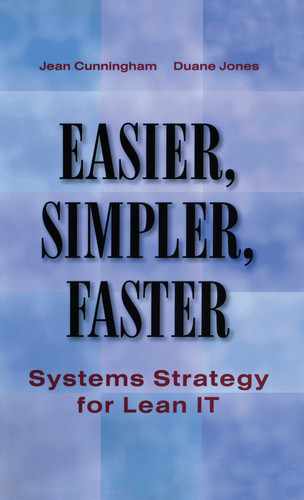0%
21Chapters
0-1Hours read
0kTotal Words
To enhance and sustain its Lean journey, a company must implement information systems that fully support and enhance the Lean initiative. In
Table of Contents
- Cover
- Half Title
- Title Page
- Copyright Page
- Dedication
- Table of Contents
- Acknowledgments
- Introduction
- Chapter 1: Lean Basics to Define Your Customer Value, Eliminate Wastes, and Align IS
- Chapter 2: Applying Standardization to Information Systems
- Chapter 3: Integrating Your Order Entry into the Information Highway
- Chapter 4: Selecting, Enabling, and Customizing Your ERP System
- Base Product Definition—Technology and Business Preferences
- Use Business People with Lean Backgrounds to Find a New ERP System
- Skip the ERP Product Sales Talk and Go Directly to the Technicians
- The Role of End User Participation
- Finalizing Our ERP Choice
- Managing Your ERP—Implementing a Vanilla Version vs. Customizing
- Customizing ERP after Implementation
- The Power of Training and Keeping Programmers on Staff
- Chapter 5: Kanban: Reducing Inventory and Managing Pull with Suppliers
- Kanban Basics
- Benefits of Less Inventory
- MRP Produces More Inventory, Less Flexibility
- The Kanban Process Begins to Open Doors
- Kanban Reduces Inventory, Eliminates Waste, and Improves Savings
- Integrating the Kanban Process into the ERP System
- Creating Self-Billing Invoices
- Kanban Builds Stronger Supplier Relationships
- Inventory Accuracy Is Less Critical with a Kanban System
- Chapter 6: Reshuffling MRP to Align with Kanban and Lean
- Chapter 7: Mission to Go Live–Building Teams and Overcoming Barriers
- Chapter 8: Capturing, Managing, and Sharing Information
- Chapter 9: Lean Accounting Systems
- Appendix I: Seven Steps to Eliminating Standard Cost from an Information System
- Appendix II: The Thirteen Guiding Information System Principles
- Index
- About the Authors
